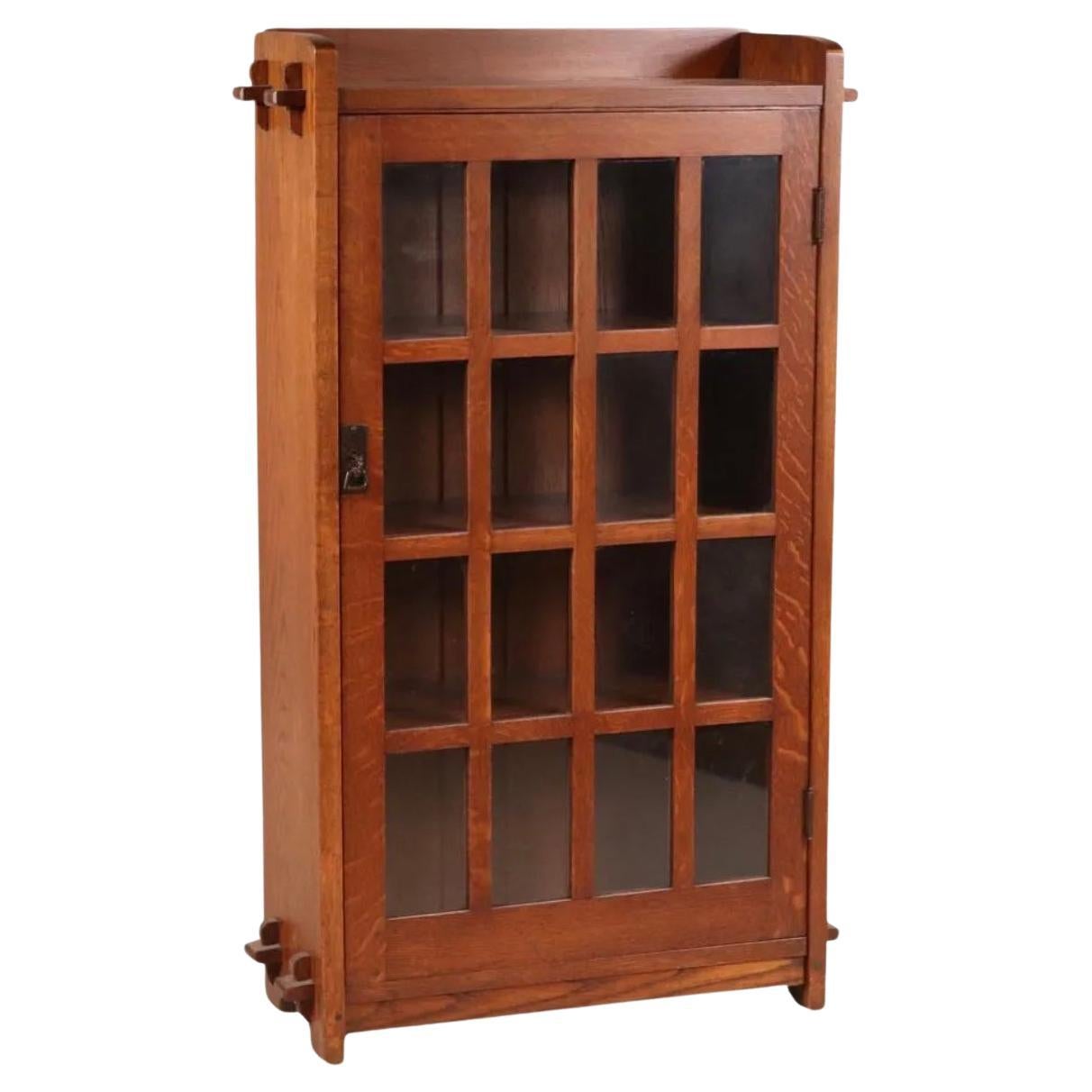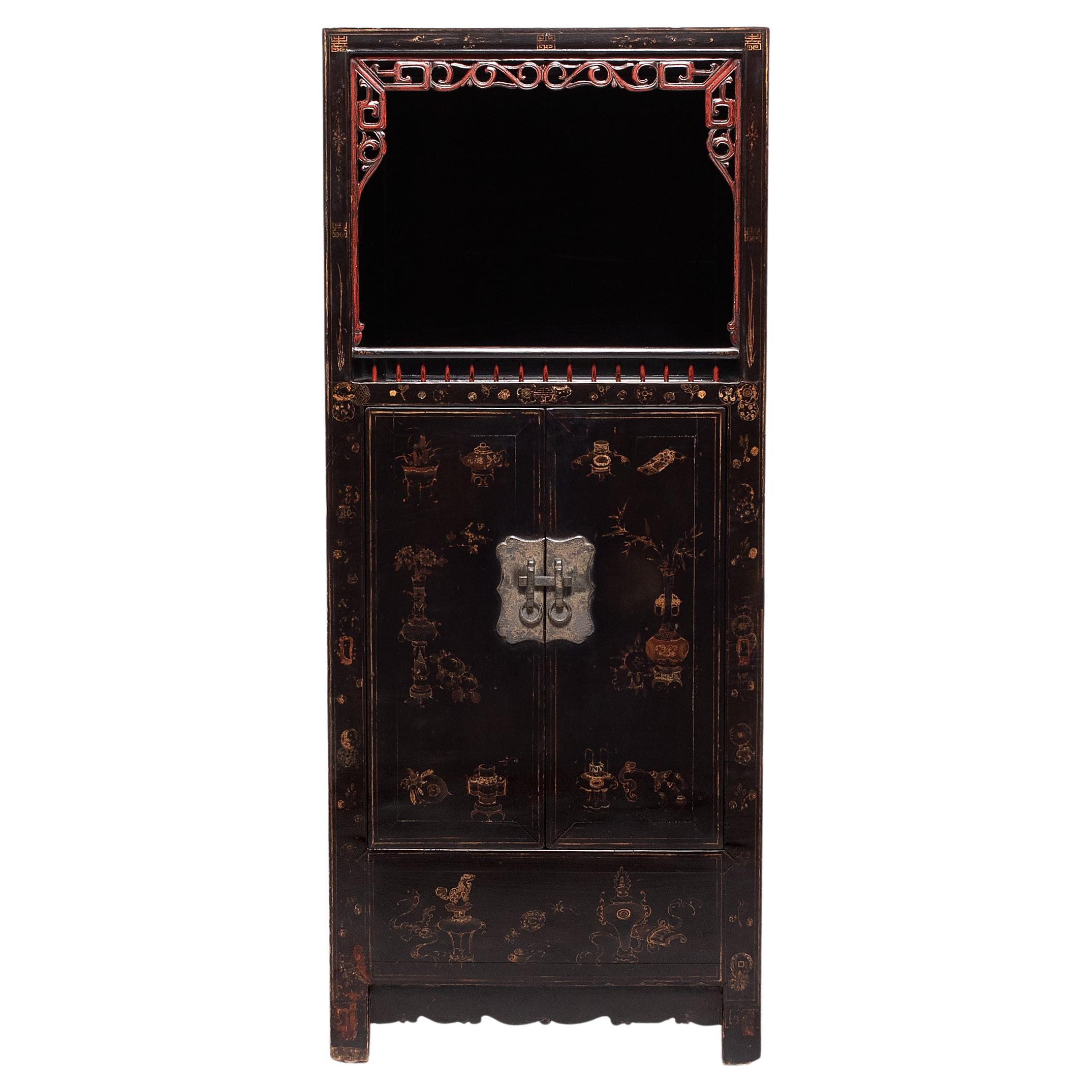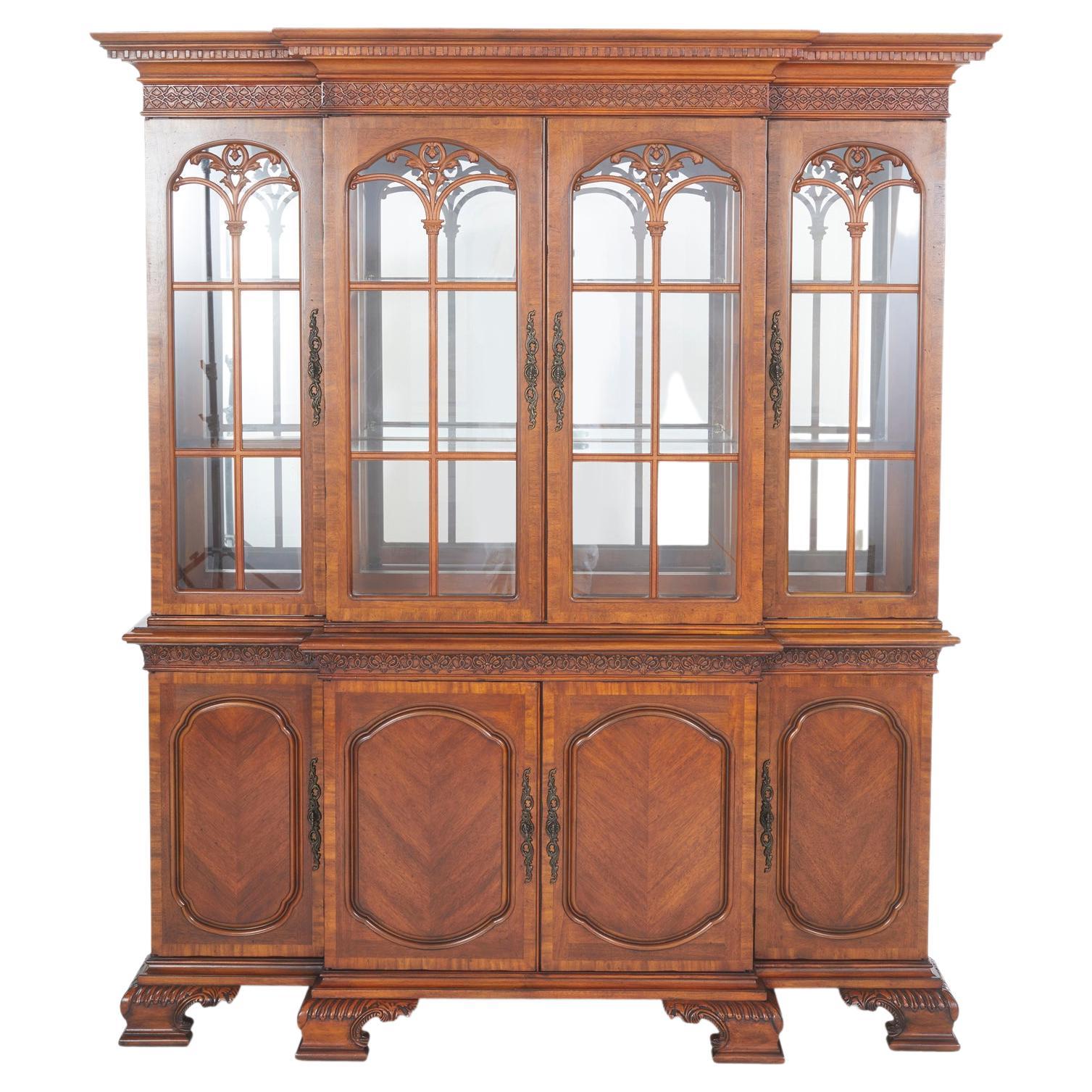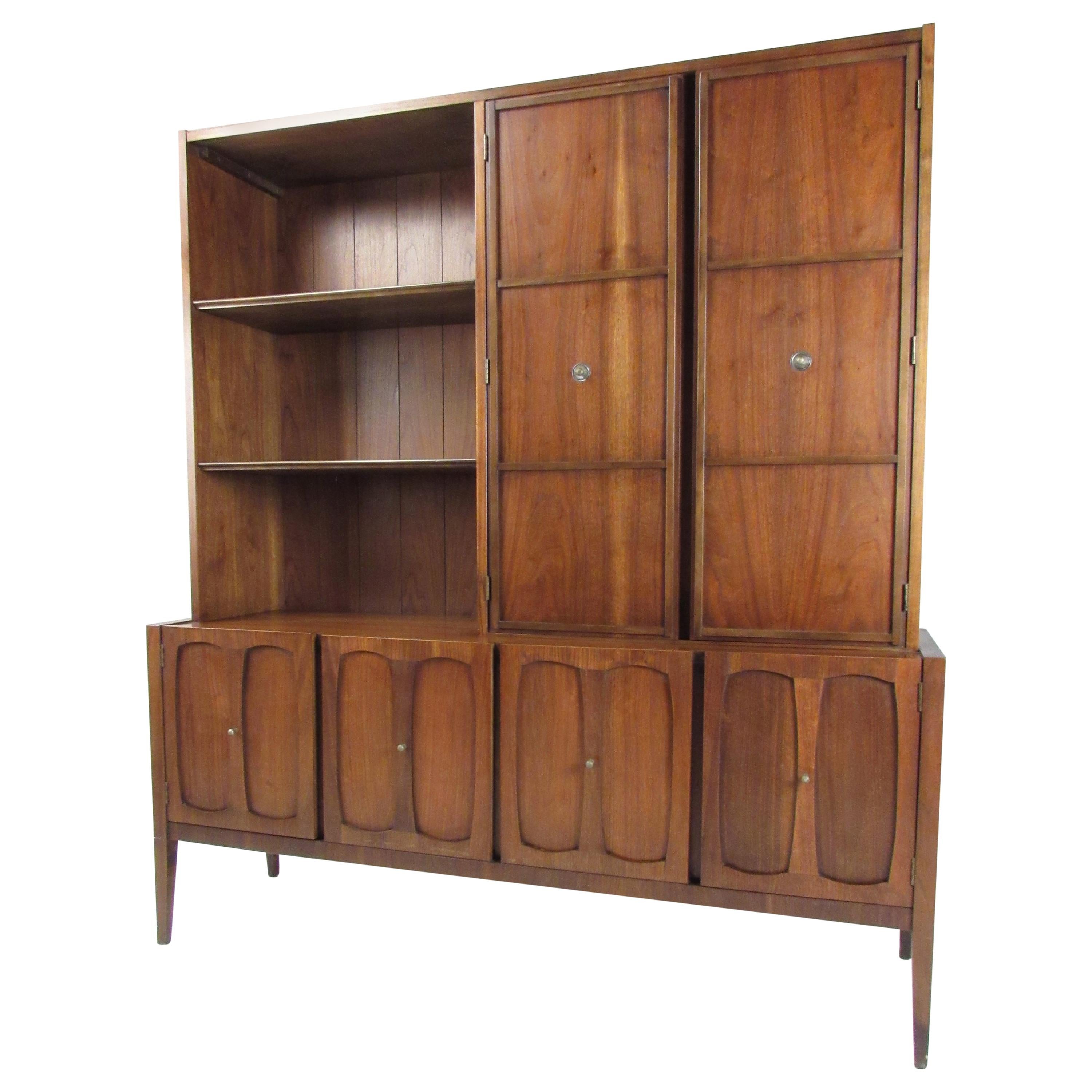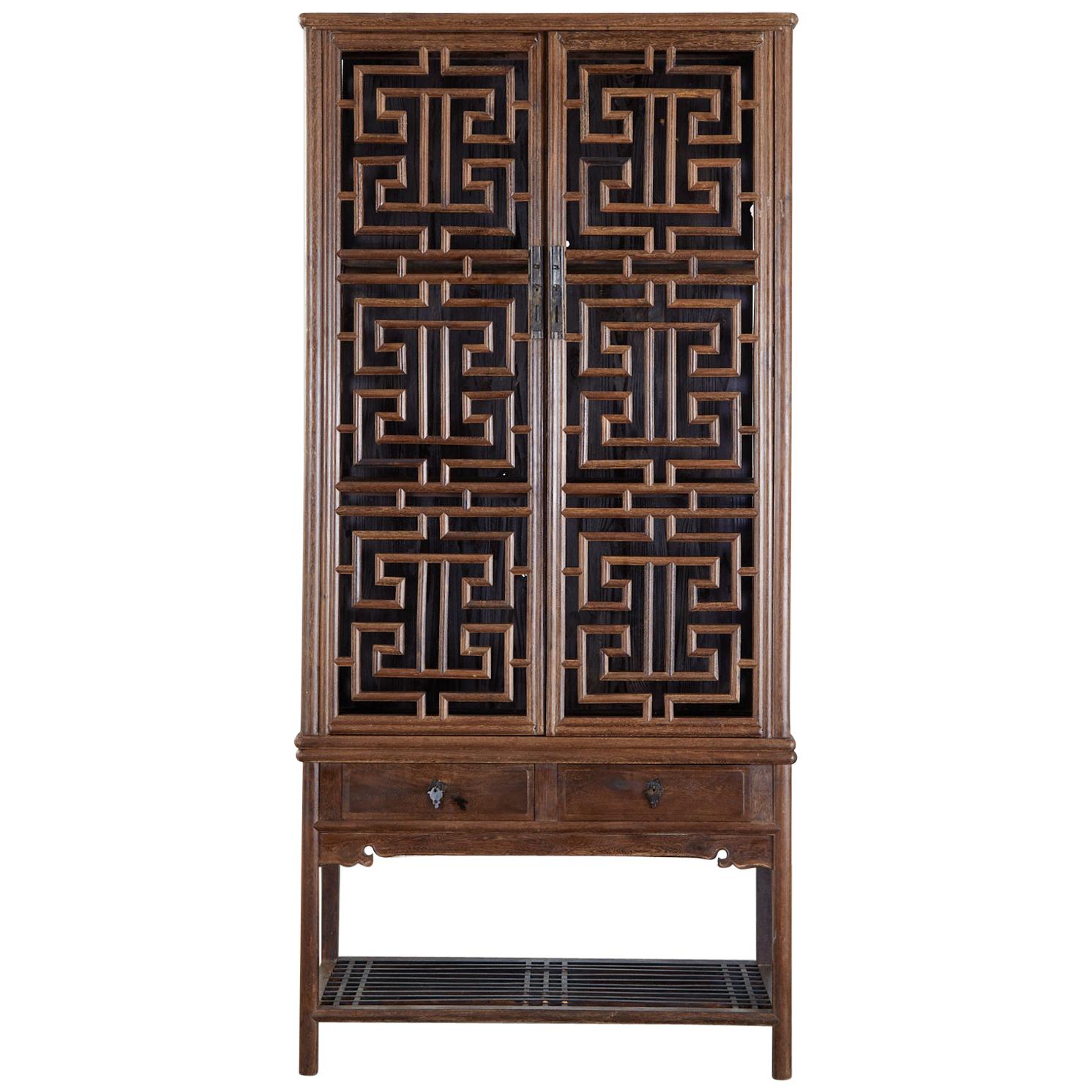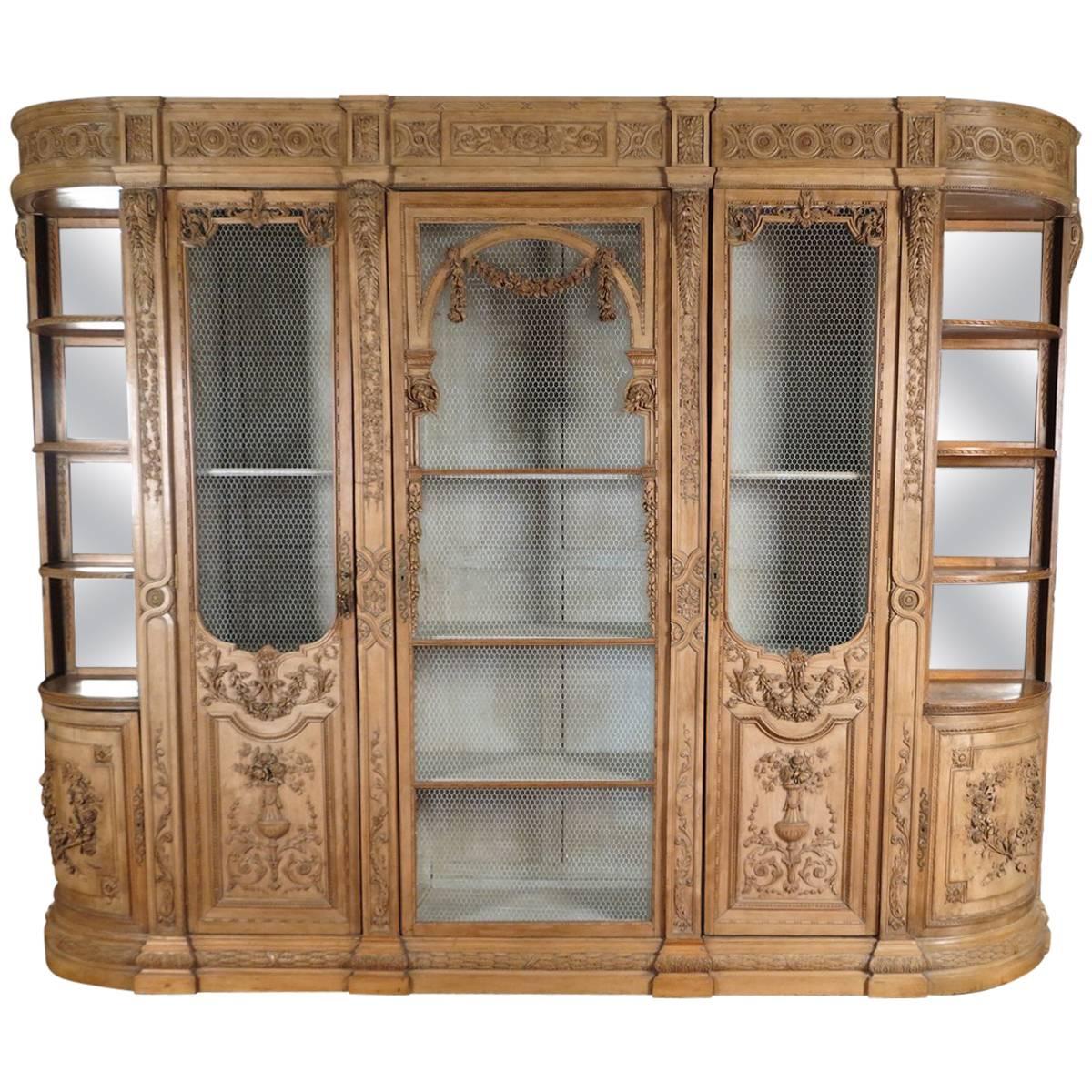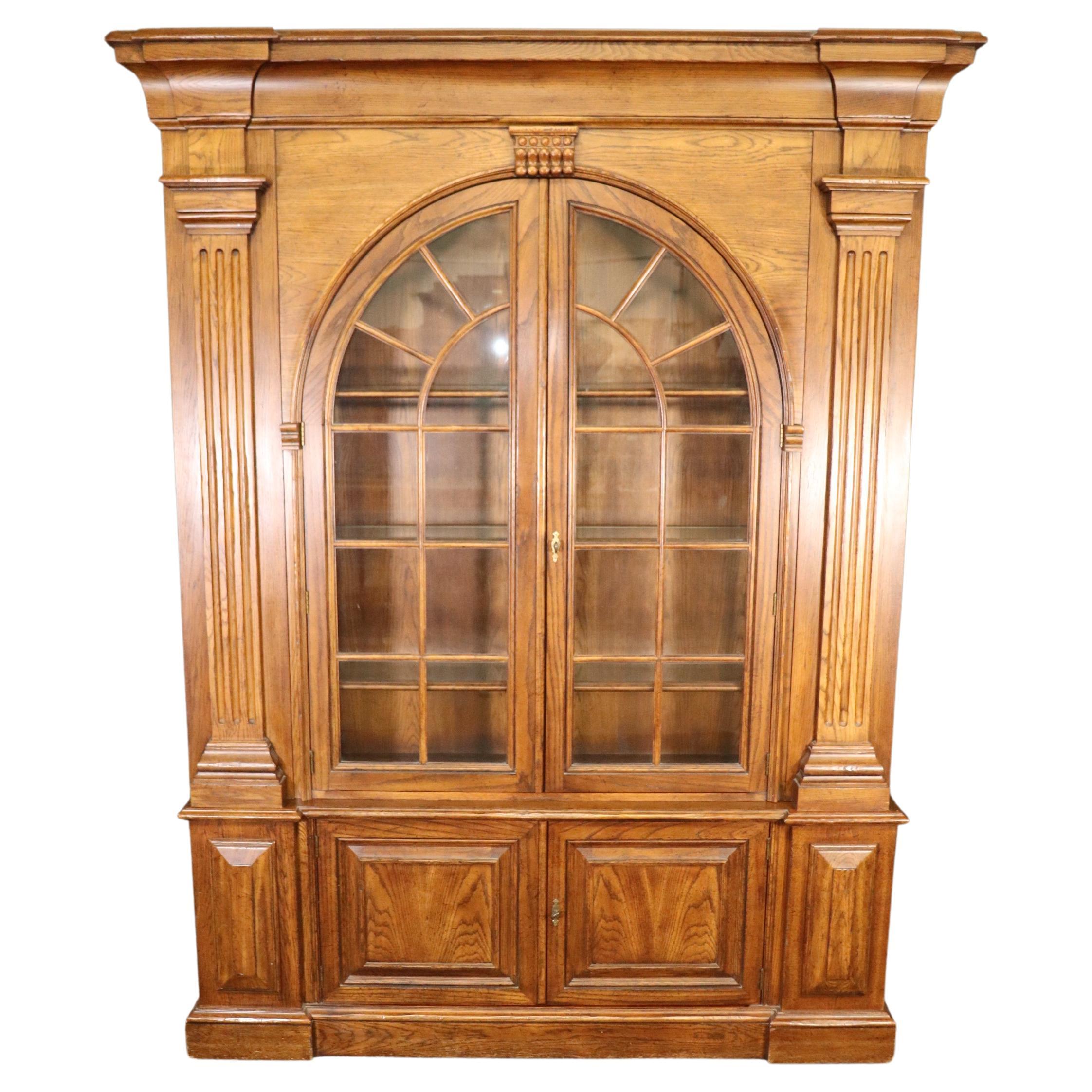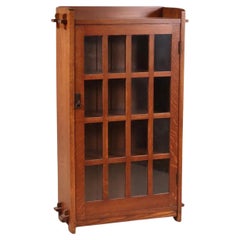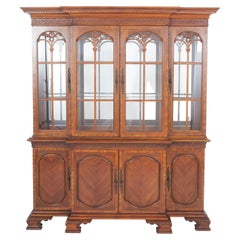
Rare, Signed L&JG Stickley China Cabinet
View Similar Items
1 of 9
Rare, Signed L&JG Stickley China Cabinet
About the Item
- Dimensions:Height: 70 in (177.8 cm)Width: 50 in (127 cm)Depth: 17.125 in (43.5 cm)
- Place of Origin:
- Period:
- Date of Manufacture:c. 1910
- Condition:Very nice condition featuring original finish and hardware.
- Seller Location:Pasadena, CA
- Reference Number:1stDibs: U0910318622192
You May Also Like
- L & JG Stickley Single Door Oak BookcaseLocated in Dallas, TXL & LG Stickley Oak Bookcase. Circa 1910 A single 16 pane glass window door bookcase with mortise and tenon oak wood construction is wonderful condition with a beautiful finish ready to complete your arts and crafts Gustave Stickley collection. Dimensions: 54-3/4 x 34-1/4 x 12 inches (139 x 87 x 30.5 cm) (each) Provenance: Property from the Estate of Angela Gross Folk Condition: Very good condition with tasteful handmade quality of the Arts and Crafts movement. Minor nicks and losses to edges throughout. Minor splits. Paint on interior not original to bookcase tastefully done.. No chips or cracks to glass pane. Founded in 1900 by Leopold and John George Stickley, L. and J.G. Stickley, Inc. is a manufacturer and marketer of premium solid wood furniture. Privately owned by the Audi family since 1974, the company now operates a facility greater than 400,000 square feet in Manlius, New York, an upholstery plant in North Carolina, and six retail showrooms in New York and Connecticut. Stickley, then 41, returned home to Eastwood, New York, where he set up his Craftsman Shops in 1898 and began to experiment with his own distinctive designs. He favored clean lines and emphasized the inherent beauty of natural wood and leather. Like Morris, he sought inspiration in the styles of the medieval period. He worked in natural white oak because of its strength and "honesty." Rejecting ornamentation and valuing craftsmanship, he based his designs on rectilinear forms; construction features, such as mortise and tenon and dovetail joints, doubled as decoration. He labeled his original pieces with his name and shopmark, which depicted a small joiner's compass inset with the slogan "Als ik kan," or "To the best of my ability," in Flemish. Stickley's furniture--called Mission Oak because of the early 1900s popularity of California mission architecture and because it somewhat resembled the furniture used in the missions--soon found enthusiastic support. So, too, did Stickley's philosophy, which others embraced as visionary and reformist. Soon manufacturers across the country were creating their own versions of "mission" furniture. These included Stickley's own younger brothers: Leopold and John George, who incorporated in Fayetteville, New York, in 1904, and, in 1905, introduced their first furniture line alongside Gustav's Mission Oak at a Grand Rapids trade show; Albert Stickley, who made furniture under the label Stickley Brothers Co. in Grand Rapids, Michigan; and Charles Stickley, who shared ownership of Stickley and Brandt Chair Co. in Binghamton, New York. All of the Stickleys were accomplished craftsmen, who, like their older brother, were not opposed to machines; they simply used machinery to get the manufacturing process to the point where the hand could efficiently take over and complete the joinery. It was not industrialization per se that they rejected, but the sloppy work practices encouraged by mass production. In fact, Leopold and John George Stickley introduced some cutting edge designs and innovative construction techniques of their own with their Handcraft line. However, only Gustav Stickley attempted to market a lifestyle. Like his European counterparts, Gustav Stickley published on the subject of his philosophy of simplicity. He introduced his own magazine, The Craftsman, whose masthead announced its purpose as being "in the interest of better art, better work, and a better, more reasonable way of living," and filled it with treatises and illustrations of his furniture and interior design--every aspect of the designed environment, from tiles and pottery to gardens and landscape. He also developed and sold model house plans...Category
Vintage 1910s American Bookcases
MaterialsOak
- Chinese Painted Book Cabinet, c. 1850Located in Chicago, ILThis lacquered display cabinet from Shanxi province was crafted in the mid-19th century using traditional mortise-and-tenon joinery methods. The enclosed lower half was used for gene...Category
Antique Mid-19th Century Chinese Qing Cabinets
MaterialsElm
- Mahogany Wood China Cabinet / HutchLocated in Tarry Town, NYHand crafted Italian Mahogany wood two part china cabinet / hutch with interior glass shelves and mirror back splash. The hutch / cabinet is very sturdy and in good condition. Minor ...Category
Vintage 1930s Italian Neoclassical Cabinets
MaterialsBrass
- Mid-Century Modern Walnut China CabinetLocated in Brooklyn, NYThis stunning vintage modern china cabinet features unique carved designs on cabinet door fronts and sculpted pulls. A well-made case piece that functions as a buffet, bookcase, or d...Category
Vintage 1970s Mid-Century Modern Bookcases
MaterialsWalnut
- Chinese Qing Style Open Fretwork Kitchen CabinetLocated in Rio Vista, CAMagnificent Chinese two-piece kitchen cabinet featuring a carved lattice open fretwork cupboard case. Made in the Qing style from beautifully grained hardwo...Category
20th Century Chinese Qing Cabinets
MaterialsBrass
$6,800 Sale Price20% Off - Fine Chinese Trailing Vine Display Cabinet, c. 1850Located in Chicago, ILIt's highly unusual to find a Qing dynasty display cabinet with this level of intricacy in its hand carved doors, rails, and side panels. Crafted in China's Hebei province in the mid...Category
Antique Mid-19th Century Chinese Qing Cabinets
MaterialsCedar
Recently Viewed
View AllMore Ways To Browse
Signed Stickley
Jg Stickley
L Jg Stickley
L And Jg Stickley
L And Jg Stickley Antique Furniture
Stickley China Cabinet
Stickley China
Pair Doors Glass
Pair Glass Doors
Door Way
Wood Display Shelves
French Wood And Glass Cabinet
Antique Hand Carved Panel
Art Deco Maple
French 1920 Cabinet
Painted Display Case
Kitchen Work Top
Mid Century Modern Display Cabinet
